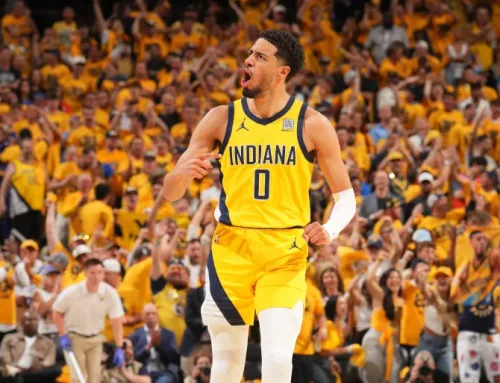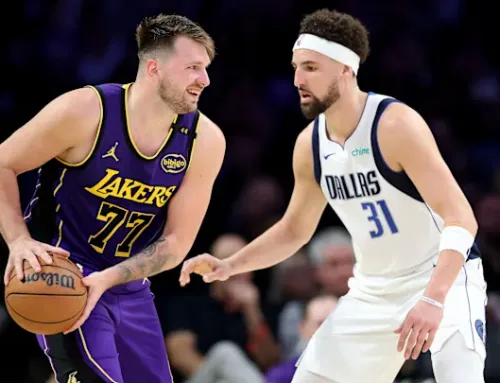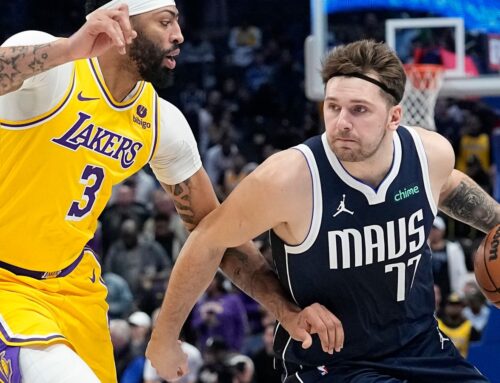Midseason Rookie Report – 3/16
By: Avi Tyagi
Full disclosure: there were so many options in this class for these spots, I carefully considered at least 10 viable names here. The selected group is a mix of positive impact contributors and interesting long-term contributors.
A Wild Card
Isaiah Jackson’s sample size of games this year is relatively small. A variety of injuries have kept him out for extended periods of time. Yet, there are flickers of overall excellence and dominance. As an offensive rebounder, he’s fantastic. Oftentimes, those numbers are reflective of a team scheme, but his 14% offensive rebounding percentage is mostly ascribable to his timing, quick hops, and overall skillset. He earns his 45% free throw rate through the dynamism of his rolls to the rim. With phenomenal dynamism, he’s a driver’s dream as a lob threat. All of that consolidates into a 77nd percentile PnR roller, even as a rookie. On top of that, all of a sudden, his 3-point form looks viable. Decent mechanics and consistent low-70s percentages at the line suggested some potential growth in those aspects, but it’s developed far faster than could be reasonably expected. The speeds of his releases on some of these attempts mirror those of actual 3&D wings. He’s even trying step backs already! He probably isn’t going to be expected to produce much as a dribbler yet, but he’s already so dynamic and such a fluid athlete that there might even be some growth on those fronts. As a distributor, he’s not yet flashed polish in short roll situations or with handoffs, and that may be nurtured. Defensively, there’s still refinement to be done. He doesn’t yet play to the scouting report and concedes more pick and pop 3s than he needs to. He also may mistime his return to the roller in the PnR do-si-do, conceding both the pass and the lane. However, he already often covers the extra ground from any slight missteps quickly enough to emerge as a shot swatter. An 9% block rate is absurd and opponents shoot 5.4% worse than expected within 10 feet of the rim when I-Jax is roaming. He’s still a little jumpy, so he will compromise positioning from time to time and foul far more than he needs to, but the glimmers shine brighter. Many rookie centers have learned the nuances of the position over time, and he’s a potential 23% usage offensive force capable of 8-9 free throw attempts a game and 27 points per 100 possessions. That’s an easier proclamation to make when that’s actually a citation of his current statistical profile, not a projection. If he can develop his passing acumen, improve his handle, and sharpen his defense, I-Jax might just dazzle.
3&EliteD
“Not On Herb” is real. Herb has been one of the top 5 rookie performers. What happens when an excellent defensive prospect who can’t shoot meets the fairy dust pouring out of the Pelicans shooting development program? You get a promising rookie who’s already exceeded all reasonable expectations by becoming the Pelican’s best defender and most consistent presence on a night-to-night basis. He’s already faced a gallery of the best offensive threats in the league (Donovan Mitchell, Lavine, Beal, Trae, Ant Edwards, Jrue, Shai, PG, and Luka), and held up decently well (opponents shoot about as expected against him per NBA.com). 2.5 steals and 1.3 blocks per 100 possessions without compromising positioning are elite figures in unison. There are only 6 players among qualified players with at least a 2% steal rate and 2.5% block rate. Those benchmarks are not cherry picked, rather those are near the 80th percentile league-wide marks for each figure. That list: Thybulle, Bam, Herb Jones, Covington, Patrick Beverly, and Jarred Vanderbilt. Draymond Green only lacks the games to qualify. That is exceptional company, symbolic of his versatility on-ball and as a help side defender. Offensively, he’s become a potential double-digit scorer, who can actually attack closeouts with a shooting line of 48-34-85. That’s a huge jump from his previous college career stats of 29% from 3 and 60% from the line. The Pelicans have improved his jumper’s fluidity, unlocking his opportunities to become a viable offensive presence. He’s not a high-usage scorer and doesn’t yet figure to be an initiator or self-creator (assisted on 72%! of his shots). However, he defends with intensity and attention to detail, hits 3s, attacks closeouts well enough to attract fouls (a 27% free throw rate), and finishes well on cuts to the hoop (half of his shots are within the restricted area, he scores on 67% of those shots, and 63% of those makes are assisted). Good stuff.
3&D with Dunks and Drives
Josh Christopher has already made major strides to overcome some of his pre-draft concerns. He’s not likely to be a secondary passer, but he actually will advance the ball through the flow of the offense, similar to Moody. He also loves adding a little flair to his transition passes or with those where he already knows the reads, which is still a massive improvement on the pre-draft tape. Offensively, he’s still a little reticent to get 3s up (only 39% of his shot diet) and he’s about average running PnRs (.83 points per possession at the 47th percentile). The Rockets’ plan for Josh encourages embracing more catch-and-shoot 3s (shocker), and why shouldn’t it, when he’s 35% on them. Going back through high school, shot selection has been a massive reason for consistent 3-point percentages in the low 30s, so any slight distribution changes would be a boon for his game. Defensively, there are still too many unnecessary fly-by closeouts, and if he’s on an off-ball shooter, he’s likely getting lost. He doesn’t yet consistently get cleanly over screens either, but overall, he’s not to be held as responsible for the Rockets’ porous defense as impact metrics may suggest. On-ball, he actually maintains his focus and effort level pretty well, and won’t get blown by or torched. He’s already showing far more consistency at holding his ground and sliding with drivers. Josh gets caught with his hand in the cookie jar at times, but 2.2 steals per 100 possessions make up for it. Let’s get to his differentiating strength as a 3&D player: the drives and finishes. He can already get to the rim consistently and attract fouls. Almost half of his shots come within 8 feet of the rim, 63% of which are unassisted, and yet, even as a rookie, he’s still shooting 57% in that region (per NBA.com’s shooting splits). That shot profile lends itself to trips at the line (a corresponding 20% free throw rate). An added bonus: He’s 76% from the stripe. That’s extremely promising and paints the picture of a potential 3s-and-dunks self-creating offensive prospect who can brush up on technique to become a distinguished defender.
Piecing It Together
Ziaire Williams’ Fortes: He’s a dunk festival with great free throw indicators for potential 3-pointer prowess. He’s established himself as the accompanist to Ja Morant’s concerto on the fast break. He scores 1.433 points per possession on transition attempts, at the 86rd percentile league-wide and composing 28% of his overall shot profile. He’s also always been a career 80% on free throws, a great positive signal for his shooting potential. As a defender, he was notably cooked repeatedly by Steph with a masterclass of off-ball movement and isolation play and other quick guards can whoosh by him, but otherwise he’s been semi-passable as a rookie defender. Overall, opponents are shooting only 0.3% better than expected against him. He mostly relies on his length to contain guards with passable footwork on the perimeter. He’s a little block-happy at times and doesn’t always rotate to help as the low-man, but overall, it’s a solid starting point for a rookie wing who still has a lot of muscle to add.
Ziaire’s Room for Improvement: He can’t shoot yet. Almost all of his made shots are assisted. He hasn’t showcased any ability to attack off the dribble yet despite some previous positive indicators. That might be a conscious choice the Grizzlies have made as part of their development plan for him. He doesn’t yet have the requisite handle nor the strength or quickness to beat his defenders on softer closeouts so they may be waiting for those skills to blossom before allowing him to attempt self-creation. His set shot mostly suffers due to a slight elongated dip, in a similar fashion to Kuminga. It causes both to disconnect their upper body mechanics from their base, syncopating their jumpers’ rhythms. Added core strength might let Ziaire comfortably generate power on deeper shots and correspondingly speed up his release and smoothen his motion. Currently, he sometimes hunches over on rushed, contested jumpers and a stronger core may change that too. He already scores an extremely efficient .41 points per touch and 60% of his shots right now are 3s. Upgrading his jumper to around 36-37% from 3 would in itself net him massive gains. Additionally, any added strength might actually unseal dribble-drive opportunities to attack in the mid-range or near the hoop. Defensively, a lot of his mistakes are just positioning errors: going around screens the wrong way, losing his man off-ball, top-locking incorrectly, or closing out way too hard and taking himself out of the play. With coaching, the Grizzlies can brush those up and he has already made strides. With improved fundamentals, all they have to do is prevent him from taking any matchups against guards with elite quickness or against dominating big men. The result: Ziaire might shine as two-way force. A power forward who flourishes on the perimeter, splashes 3s, and is a transition party waiting to happen is a great concept.
Alperun Sengun: What a unique player. As a big man, he’s not an aerial rim-protector, reducing his defensive functionality as a shot-blocker (opponents shoot 0.5% better than average against his contests within 10 feet of the hoop according to NBA.com tracking data). However, his hand placement and timing on contests are often exceptional, allowing him to generate a 1.9% steal rate and 4.6% block rate, an excellent combination typically matched only by the league’s most versatile defenders. His 59% conversion rate near the rim is below the league average, and an atypical figure for big men. Yet, that may be understandable when 54% of his makes are unassisted (a league-leading mark among centers who average at least 12 minutes a game) and he’s on a roster focused on self-creation that doesn’t yet feature him in the pick and roll. Post-ups comprise 22% of his current shot chart, and his excellent footwork and varied sets of move-packages create functional scoring chances even without the strength to prep for established positioning and easier attempts. Commensurately, he scores at the 47% percentile league-wide on post-ups, in a similar range as John Collins, Sabonis, and Robin Lopez. Additionally, he generates 3.4 drives per game, a top-10 mark in the league among centers. He uses craft, speed, and dexterity on those play types to merit a gargantuan .457 free throw rate. To add to the intrigue, while his resume does include a 20.7% turnover rate, he also distributes adeptly from the short roll to produce a 20% assist rate, all through the flow of the offense. There is a 7-player list with at least 800 minutes on the season and the simple qualifications of a .35+ free throw rate and a 20%+ assist percentage. You may know some of them: Giannis, Embiid, Butler, Sengun, Sabonis, DeRozan, and KD. What are the odds of that? Sengun’s statistical profile and play style is distinguished from that group, and yet the list seems to speak for itself. Sengun’s 3-pointer, with a considered release, doesn’t currently project to be a staple of his offense, despite some improvements already, but it could be a bonus if it develops. Focused developments on fine-tuning his passing and on adding strength to improve his rim-finishing and to become a stouter defensive force are the keys for Sengun to emerge as a defensive playmaker and a dynamic, offensive hub.




